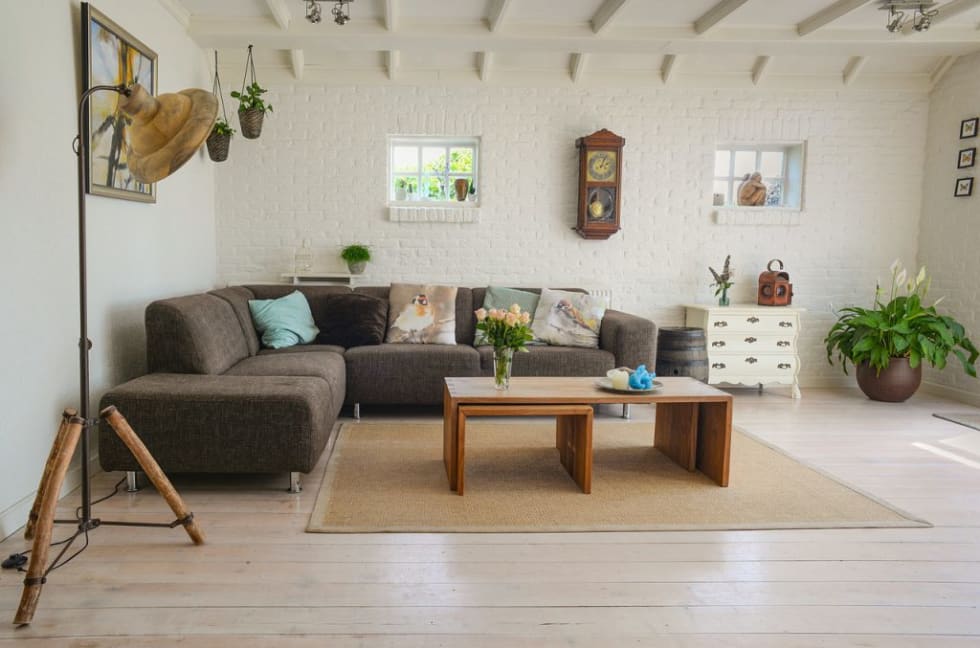Furnished vs. Unfurnished: Pros & Cons for Property Managers

When prepping your rental property to list it, you’ll find countless options of what you’d like to provide prospective tenants. The age-old debate of whether you should rent your rental furnished or unfurnished is one that ultimately depends on your personal preferences.
In this guide, we’ll take a closer look at both furnished and unfurnished apartments, including the pros and cons of each. Learning all the details about your options will help you make an educated decision that is right for you and your property.
What is a Furnished Apartment?
Before we dive into the pros and cons, we want to make sure you have a clear understanding of what a furnished apartment entails. Simply put, a furnished apartment comes with all of the necessary items for a renter to live in it comfortably. What special accommodations this might include can vary from apartment to apartment, though.
The most basic furnished apartments will come with essential appliances and living furniture such as:
- Bed
- Couch
- Dresser
However, some fully-furnished apartments have everything down to the kitchenware a renter will need to make a basic meal. Some apartments can even come fully decorated as well.
As you can imagine, there are both pros and cons to renting your apartment out furnished.

Pros of Furnished Apartment
Let’s start by taking a closer look at some of the benefits of renting your apartment furnished.
You Can Earn More
One of the primary reasons landlords enjoy renting out furnished apartments is that furnishing units can allow them to charge above the market rate for rent. While the upfront costs of furnishing an apartment may be higher, ultimately, it will pay itself off over time.
You Can Request a Larger Security Deposit Fund
In addition to having higher rent than the market rate, you may also be able to ask for a larger security deposit at move-in. Since there is more to the property that a tenant could potentially damage, asking for a larger security deposit to cover damages makes sense.
Also, if you ask for more rent and your security deposit is the equivalent of one month’s rent, naturally, the deposit will be higher.
Keep in mind the security deposit limitations based on the local laws in your area, though. Be sure you are abiding by the regulations to avoid any sort of legal action from prospective tenants.
Tenants Can Move-in Quicker
When your apartment comes furnished, you can typically find tenants much faster. Since the tenant doesn’t have to worry about moving all their belongings, the move-in process tends to be expedited.
As a landlord, the less time your apartment sits vacant, the better. So, having a tenant that can move in as quickly as possible is always ideal.
You Can Deduct Taxes
Another reason landlords decide to rent out their apartments furnished is because of tax purposes. Spending money to furnish your apartment before renting it out can be written off as a Cost of Goods.
Of course, check in with your CPA for more info before making any commitments.

Cons of Furnished Apartment
There are also a few downsides to renting a furnished apartment. Let’s take a closer look at some of those.
You’re Putting Your Property at Risk
Renting a furnished apartment means that you put your property at risk. Tenants can damage your property easily when there are also large pieces of furniture and appliances in it. Although you may cover more with a bigger security deposit, not all landlords believe that the risk is worth the reward in this situation.
If you decide to furnish your apartment, detail strict guidelines in your lease agreement and explain what damage to the furnishings may look like, and what action will remedy any damages.
You’ll Spend Money Upfront to Furnish
Another downside to furnishing an apartment for renters is the upfront costs you will have to face. While your apartment sits vacant, you are not collecting any monthly rent, which could make putting money down on furnishings difficult for some landlords.
Keep in mind, money upfront could come back to you because you may be able to charge a higher rent than in an unfurnished apartment. Conduct some market research for your area and see if furnished apartments rent more and how significant the difference may be.
There’s More Turnover Between Tenants
It’s a general assumption that furnished apartments attract short-term tenants. For the most part, particular groups of renters seek out furnished apartments, including:
- Students
- Interns
- Corporate business travelers
- Etc.
The common trend amongst these types of renters is that they only need short-term accommodations. Additionally, people who stay in apartments longer usually look to customize them to match their tastes. Not having that ability to do so in a furnished apartment may lead them in another direction.

What is an Unfurnished Apartment
Now that you know all of the details about furnished apartments, it’s time to take a closer look at unfurnished apartments.
Generally speaking, an unfurnished apartment is your typical apartment with nothing in it. Many consider them bare-bones, as they only contain the basic appliances with no furnishings whatsoever.
Unfurnished apartments tend to be the most common option on the market. But, much like renting your apartment furnished, there are both benefits and pitfalls to renting your apartment unfurnished.
Pros of an Unfurnished Apartment
There are several benefits to renting unfurnished apartments for landlords.
You’ll Attract Long Term Tenants
A landlord’s dream is finding and retaining long-term tenants for their rental. The time, money and stress-saving benefits are too significant to ignore.
When you rent an unfurnished apartment, you are more likely to attract long-term tenants. As previously mentioned, renters seeking out furnished apartments are typically individuals looking for short-term housing accommodations.
Alternatively, those seeking out unfurnished apartments are more likely to have their own things to furnish a home in a way that suits their lifestyle and budget.
Renters are less likely to move around when they take the time and spend the money decorating an apartment to their taste.
There’s Less Management Involved
Another benefit to renting an unfurnished apartment is that you don’t have to worry about tenants ruining property. While the threat of property damage is always there, it is significantly minimized when you remove furnishings in your home.
Low Turnover Costs
Landlords prefer to rent unfurnished apartments because of the low turnover costs. When you add furnishings like upholstered couches or bedding, you will have to spend more money to have all of those items professionally cleaned before moving a new tenant in.

Cons of an Unfurnished Apartment
While some prefer renting their apartments unfurnished, there are still downsides.
You Can’t Charge as Much for Rent
When you choose to rent your property as an unfurnished apartment, you create limits with monthly rent you can charge. You’ll have to stick to the market rates in your area and won’t be able to charge as much as you would with a furnished apartment.
Additionally, you limit your security deposit to an amount that falls more closely in line with your monthly rent.
Storage Costs
If you have a rental that already has furniture or appliances, you’ll be responsible for moving your extra belongings into a storage unit if you choose to rent an unfurnished apartment.
The other alternative to eliminating storage costs might be to sell the belongings you have, but that can be equally as burdensome.
Move-In and Move-Out Damages
An often overlooked thought in unfurnished apartments is the amount of damage your property may be susceptible to during move-in and move-outs. When tenants are responsible for furnishing the apartment themselves, they will often move large and heavy furniture around.
Tenants may not be as careful as you’d like them to be when moving, which could lead to scuffed hardwood flooring, dented door frames, or scraped walls.
Alternatively, if you already have all of the larger furniture pieces in the apartment, the amount of movement within your apartment will be limited.
Final Thoughts: Which is Right for Me?
As a landlord, there are countless decisions you must make before listing your rental, one of which is whether to rent your property as furnished or unfurnished. Ultimately, the decision comes down to a matter of personal preference.
You will need to weigh the pros and cons of renting both furnished and unfurnished apartments before making your final decision. You might also want to consider things from the renter’s perspective as well.
Interested in listing your furnished or unfurnished apartment with Apartment List, list with us today!
Share this Article



